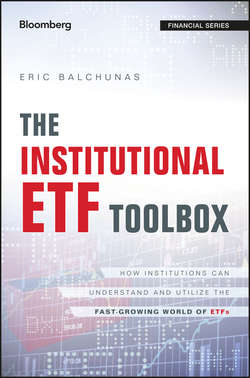Читать книгу The Institutional ETF Toolbox - Balchunas Eric - Страница 18
На сайте Литреса книга снята с продажи.
SECTION I
The ETF Phenomenon
CHAPTER 1
Why Are ETFs So Popular?
Passive Investing
ОглавлениеLack of emotion is related to the overall move to passive investing. More and more people are losing faith in a manager’s ability to pick winning securities. And why shouldn’t they – it is very difficult to beat the market.
This dips into a concept known as efficient market hypothesis, which is that at any given time the market has already priced in all the available data, and thus it is nearly impossible to know more than the market. This is not a hard concept to fathom when you consider all the manpower dedicated to analyzing securities. For example, Amazon alone has 40+ analysts covering it. These are people that do nothing but look at Amazon and the industry it operates in. Many U.S. stocks have 40+ analysts, as shown in Figure 1.3.
Figure 1.3 Total Analyst Recommendations for Large U.S. Stocks
Source: Bloomberg
The broad analyst coverage makes it difficult to gain any kind of an edge. Other areas such as fixed income and emerging markets may have less coverage and may present more opportunity for a stock picker. And that’s why in those areas – plus fixed income – you will find institutions tend to go active, while going passive with U.S. equities.
Just look at the top 5 funds in the world (including ETFs) as shown in Table 1.7 and you will see that literally all of them are passive stock index funds.
Table 1.7 The Top 5 Largest Funds in the World
Source: Bloomberg
Index investing gets associated with Average Joes using their 401(k) plans. But some of the most successful people in the financial industry who know the most about Wall Street are index investors when it comes to their own personal money. I call them “celebrity indexers.” They include Jack Lew, Janet Yellen, Michael Lewis, and Ben Stein. We know this from what they’ve said in interviews or their financial disclosure documents. Heck, even Bernie Madoff endorsed index investing from his jail cell as the least likely way to get ripped off.
But perhaps, the most famous fan of indexing is Warren Buffett. Here’s what Buffett said in a recent letter to shareholders about what he would invest in right now:
What I advise here is essentially identical to certain instructions I’ve laid out in my will. My advice to the trustee could not be more simple. Put 10 % of the cash in short-term government bonds and 90 % in a very low-cost S&P 500 index fund. I believe the trust’s long-term results from this policy will be superior to those attained by most investors – whether pension funds, institutions, individuals – who employ high fee managers.”3
Buffett specifically points to pensions and other institutions. Given who is saying this, you have to wonder why institutions don’t just follow the Oracle of Omaha and use the Vanguard S&P 500 ETF (VOO) and the iShares 1–3 Year Treasury Bond ETF (SHY), two very liquid ETFs with a blended fee of 0.06 percent a year. Not to mention a 10-year annualized return of 7.5 percent, right in line with the bogey most institutions are trying – but typically fail – to hit. I will be referring to this mini-portfolio as the “Buffett Special” throughout the book.
3
Sam Ro, “Warren Buffett Has Some Incredibly Specific Advice for Where the Average Investor Should Invest.” Business Insider, March 2014; www.businessinsider.com/warren-buffett-recommends-sp-500-index-2014-3.
